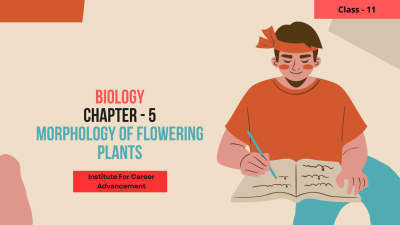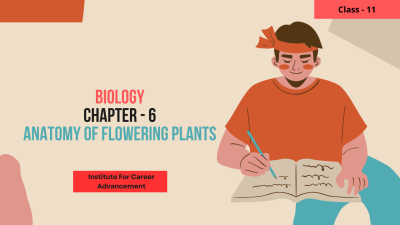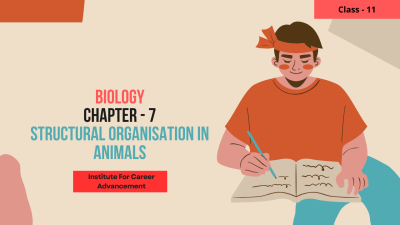Reproduction in Organisms - Class 12
In Class 12 Biology, the chapter "Reproduction in Organisms" provides a foundational understanding of how living beings perpetuate their species. Here's a short description of the key concepts covered: The chapter begins by defining reproduction as a biological process by which an organism gives rise to young ones (offspring) similar to itself. It emphasizes that reproduction ensures the continuation of species, generation after generation. Key distinctions are made between: Asexual Reproduction: This mode of reproduction involves a single parent and does not involve the fusion of gametes. The offspring produced are genetically identical to the parent, often referred to as "clones." Examples discussed include: Binary fission: Common in single-celled organisms like Amoeba and Paramecium. Budding: Seen in yeast and Hydra. Spore formation: In fungi and algae. Vegetative propagation: In plants, using structures like runners, rhizomes, suckers, tubers, offsets, and bulbs. This highlights the ability of plants to reproduce asexually through their vegetative parts. Sexual Reproduction: This involves two parents (usually) of opposite sexes, and it includes the fusion of male and female gametes to form a zygote. Sexual reproduction leads to genetic variation in the offspring, which is crucial for evolution and adaptation. The chapter outlines the various stages: Juvenile phase/Vegetative phase: The period of growth before an organism can reproduce sexually. Reproductive phase: The period during which an organism is capable of sexual reproduction. This includes events like menstruation cycles in primates and estrous cycles in non-primates, and flowering in plants. Senescent phase: The aging phase after reproduction, leading to the ultimate death of the organism. দ্বাদশ শ্রেণীর জীববিজ্ঞানে, "জীবের প্রজনন" অধ্যায়টি জীবিত প্রাণীরা কীভাবে তাদের প্রজাতিকে স্থায়ী করে তার একটি মৌলিক ধারণা প্রদান করে। এখানে মূল ধারণাগুলির একটি সংক্ষিপ্ত বিবরণ দেওয়া হল: অধ্যায়টি প্রজননকে একটি জৈবিক প্রক্রিয়া হিসাবে সংজ্ঞায়িত করে শুরু হয় যার মাধ্যমে একটি জীব তার অনুরূপ বাচ্চাদের (সন্তান) জন্ম দেয়। এটি জোর দেয় যে প্রজনন প্রজন্মের পর প্রজন্ম ধরে প্রজাতির ধারাবাহিকতা নিশ্চিত করে। এর মধ্যে মূল পার্থক্য করা হয়েছে: অযৌন প্রজনন: প্রজননের এই পদ্ধতিতে একক পিতামাতা জড়িত এবং গ্যামেটের সংমিশ্রণ জড়িত নয়। উৎপাদিত সন্তানরা পিতামাতার সাথে জিনগতভাবে অভিন্ন, প্রায়শই "ক্লোন" হিসাবে উল্লেখ করা হয়। আলোচিত উদাহরণগুলির মধ্যে রয়েছে: বাইনারি ফিশন: অ্যামিবা এবং প্যারামেসিয়ামের মতো এককোষী জীবের মধ্যে সাধারণ। প্রজনন: খামির এবং হাইড্রায় দেখা যায়। স্পোর গঠন: ছত্রাক এবং শৈবালে। উদ্ভিদ বংশবিস্তার: উদ্ভিদে, রানার, রাইজোম, সাকার, কন্দ, অফসেট এবং বাল্বের মতো কাঠামো ব্যবহার করে। এটি উদ্ভিদের তাদের উদ্ভিদ অঙ্গগুলির মাধ্যমে অযৌনভাবে প্রজনন করার ক্ষমতা তুলে ধরে। যৌন প্রজনন: এতে বিপরীত লিঙ্গের দুই পিতামাতা (সাধারণত) জড়িত থাকে এবং এতে পুরুষ এবং মহিলা গ্যামেটের সংমিশ্রণে একটি জাইগোট তৈরি হয়। যৌন প্রজননের ফলে বংশগত পরিবর্তন ঘটে, যা বিবর্তন এবং অভিযোজনের জন্য অত্যন্ত গুরুত্বপূর্ণ। অধ্যায়টি বিভিন্ন পর্যায়ের রূপরেখা তুলে ধরেছে: কিশোর পর্যায়/উদ্ভিদ পর্যায়: একটি জীব যৌনভাবে প্রজনন করতে পারার আগে বৃদ্ধির সময়কাল। প্রজনন পর্যায়: যে সময়কালে একটি জীব যৌন প্রজননে সক্ষম হয়। এর মধ্যে প্রাইমেটদের মধ্যে ঋতুচক্র এবং অ-প্রাইমেটদের মধ্যে এস্ট্রাস চক্র এবং উদ্ভিদে ফুল ফোটার মতো ঘটনা অন্তর্ভুক্ত রয়েছে। বার্ধক্য পর্যায়: প্রজননের পরে বার্ধক্য পর্যায়, যা জীবের চূড়ান্ত মৃত্যুর দিকে পরিচালিত করে।
English
Last updated
Sat, 14-Jun-2025




















